Melbourne is often described as Australia’s sporting capital, home to iconic events such as the Boxing Day Test, the Australian Tennis Open and the F1 GP, not to mention the home of most of the AFL clubs.
But the new Australia community profile shows there’s much more to Melbourne and its people, and also helps to explain why sport makes up so much of the social fabric of Melbourne.
Of course, Melbourne’s climate lends itself to outdoor activities for children from a young age, which helps in the development of future stars in the wake of Melbourne legends like Shane Warne and Gary Ablett – or Mark Viduka.
But if we look more closely, we see there’s much more to the Melbourne community.
Population of Melbourne
Melbourne has seen a massive population growth in the last Census period, adding nearly 355,000 new residents.
Age profile
One of the reasons sport is so widely popular in Melbourne is revealed by the age profile, and the diversity of cultural backgrounds. Melbourne has a large population of young people, in their early working years. These people would have a lifestyle that would most likely include involvement in sport as a participant or supporter. The percentage of this “young workforce” cohort 25-34 years of age (15.4% of the total population) is greater than the Australia average, and the average of all Australian Greater Capital Cities (but actually it’s exactly the same % as Sydney). Australia’s two largest cities have the majority of the high paying professional jobs in Australia and young adults gravitate to these areas, as well as to the education facilities in the state capitals.
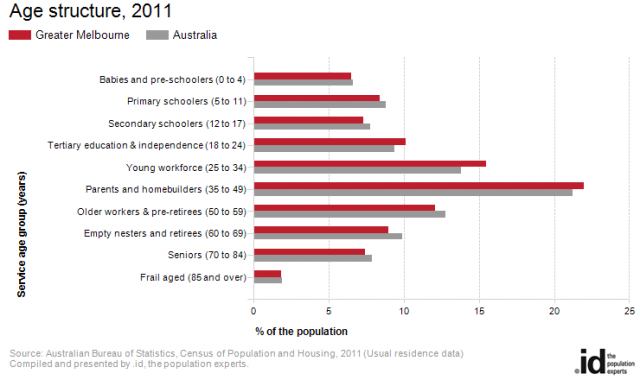
As well as already having a large “young workforce” population, the largest growth in the last Census period was also in the same group, 25-34, with an additional 78,728 young people for Greater Melbourne:

Who are we? Understanding the diverse ethnic make up of Melbourne
Melbourne, well known for being as multicultural City, is even more so now, as is shown by the Census results:
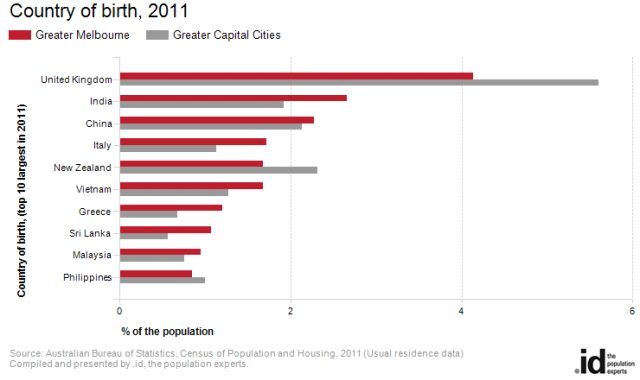
Compared to the Greater Capital Cities average, Melbourne has smaller % of its population from a British background, and more from other countries. It can be easily seen from the chart that Melbourne has many residents from a non-English speaking background – and a mix of migrants from older migrant streams from Italy and Greece, and the new wave of Asian migrants.
However, the massive increase in migration in last 5 years has seen even more diversity on the Melbourne landscape – and you can see the falling numbers of Melbourne’s traditional migrants from Italy and Greece as these people reach the end of their lives:
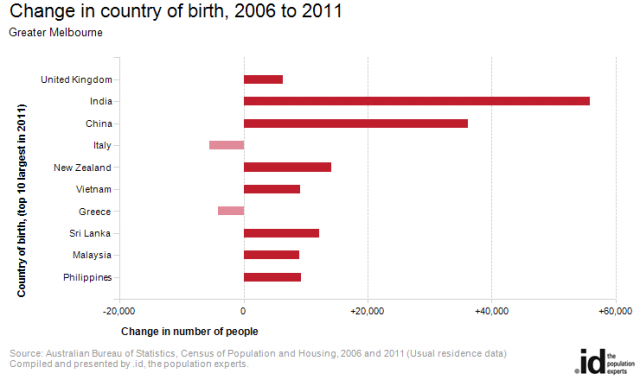
This has led to more diversity in language spoken at home. Large numbers of Greek and Italian language speakers have been joined by an increase in people speaking Chinese and Indian languages:
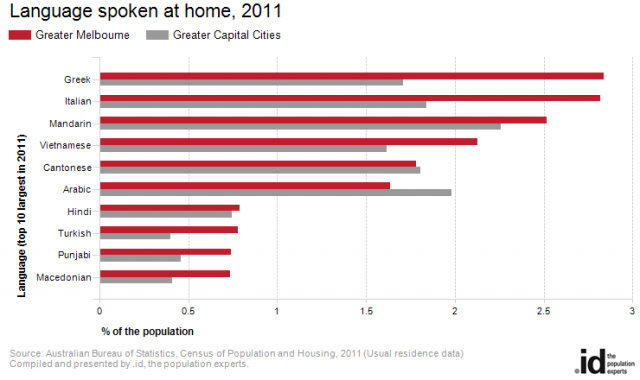

The Smart City – Higher education levels
Melbourne boasts the highest % of population completing year 12, the highest % of university qualifications and highest % currently attending University of any Capital City:
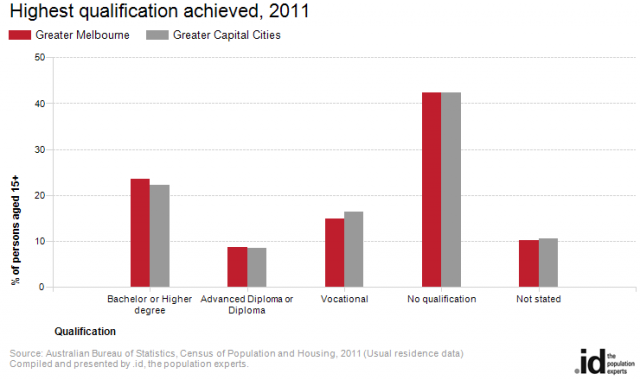
What do we do? Melbourne’s employment by occupation
There are more managers and professionals in Melbourne than the other Capital Cities, as a % of the workforce, reinforcing the “Smart City” moniker:
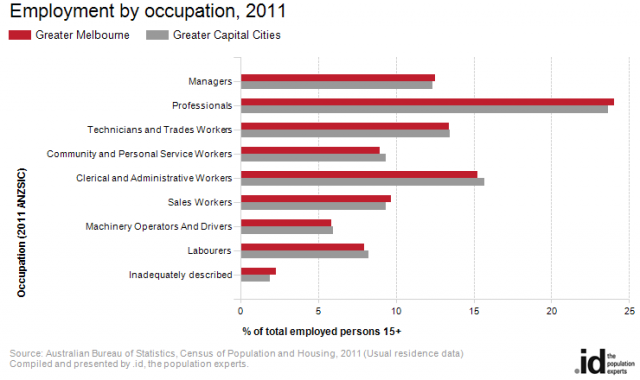
And the growth? Even more professionals and managers:

How do we live? Household types and sizes
In keeping with the large % of 25-34’s, (who are the age group most likely to have children) Melbourne has a greater % of households with children than the Capital Cities average:
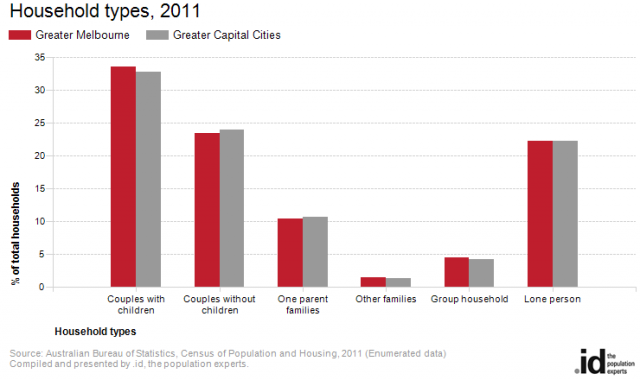
So – even more top sportspeople probably on the way as these young children grow – but what sports will they play?
That’s a topic for another blog…
Access the Australian Community Profile to find Census results for each Capital City, State, Southeast Queensland and Australia on topics including population, age, country of birth, languages spoken, occupations, industries, employment, disability, income, qualifications, transport and much more…
Access the our profile.id sites and other population statistics for Local Government Areas and suburbs at .id’s demographic resource centre.





















